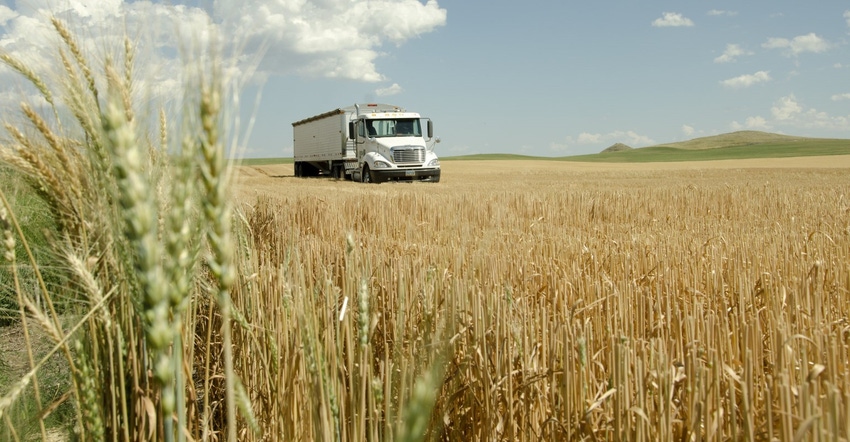
The food supply chain was able to weather the pandemic-induced challenges, but the availability of truck drivers holds the key to whether or not there will be a food supply challenge or shortage, says House Agriculture Committee Chairman David Scott, D-Ga.
To start off several hours of testimony offered at a hearing on the Immediate Challenges to Our Nation’s Food Supply Chain, Scott says it is a “barn burner of a crisis waiting to happen” and adds failure to address it could be detrimental to the nation and the world.
Jon Samson, testifying on behalf of the American Trucking Association, says that the trucking industry is currently short 80,000 drivers. And he warns by 2030 and at current trends, the gap could grow to 160,000. Nearly 1 million new drivers will need to be trained and hired in the next decade to keep pace with increase consumer demand and an aging workforce.
Scott says the “hearing made it abundantly clear that the key piece for us, as we address supply chain issues facing our food supply, is recruiting and retaining more commercial truck drivers to transport food and agriculture commodities across the country.”
“We don’t have a food shortage, but the supply is in the hands of our truck drivers,” Scott adds.
Scott shared his worry over the reality that 95% of new truck drivers do not last more than a year. Samson responded that the truck driver shortage even pre-pandemic was a systemic issue building in recent years, especially as drivers retire. The pandemic exasperated the 50,000 shortfall to 80,000 today. He says companies have tried to increase pay, incentives and flexibility to its drivers, but more is needed.
Samson, as well as Rod Wells, chief supply chain officer at GROWMARK, voiced support for the DRIVE Safe Act, which is based off a pilot program allowing highly trained younger truck drivers to participate in interstate commerce.
Wells notes that while 48 states currently allow drivers to obtain a commercial driver’s license at 18, yet they are prohibited from driving in interstate commerce until they are 21. The DRIVE Safe Act would create a two-step apprenticeship program to allows these younger drivers to enter the industry safely. Candidates would be accompanied in the cab by experienced truck drivers for a total of 400 hours of on-duty time with at least 240 hours of driving time.
Encouraging future truck drivers in high school of the career opportunities in the industry is crucial to replacing the current need for truck drivers. Samson says ATA recently attended the FFA National Convention to share with the more than 700,000 members that although there may not be a job on the farm specifically, there are more than 700,000 jobs for those who work in the agriculture, transportation and warehouse segments of the food supply chain.
Vaccine mandate headwinds
Another challenge facing the trucking industry includes government vaccination mandates for companies with 100 employees or more. Samson offers the caveat that the trucking industry isn’t anti-vaccination, but it is anti-supply chain inefficiency. And unfortunately, large carriers are seeing vaccine hesitancy in their drivers. Nearly 50% of truckers are not vaccinated, and of the 50%, 80% do not ever plan to get vaccinated. He explains this leaves larger companies seeing their truck drivers looking to find employment at companies with less than 100 employees.
Trucking workforce data gathered by ATA indicates that an employee-based vaccination mandate based on the arbitrary threshold of 100 employees could mean the loss of up to 37% of drivers for covered companies to retirements, attrition to smaller carriers, or conversion to independent contractor owner-operators.
Wells adds that GROWMARK is already short on workers with 290 openings in Illinois, Iowa and Wisconsin. The mandate requirements could lead to even more openings. “It’s already hard to find labor in rural settings,” Wells says. He cited a study that up to 33% of the rural workforce could leave the workforce over vaccination requirements.
Regulatory relief
House Agriculture Committee Ranking Member Glenn “GT” Thompson, R-Pa., also asked what regulatory flexibility could continue to offer relief to challenges in the trucking industry.
Wells cited potentially increasing weight limits to allow more product to be transported by those truckers who are on the road. He suggests that increasing weight limits to 88,000 pounds from June 30 through Nov. 1 across the nation would boost the economy by ensuring raw materials and finished goods are in the right place for purchase during this period of high demand. Higher payloads also increase efficiencies, reduce costs and lower emissions with fewer trucks in a short amount of time.
Additional relaxation of hours-of-service restrictions and the increase of the air-mile radius limits on short-haul operations could offer added relief.
About the Author(s)
You May Also Like






